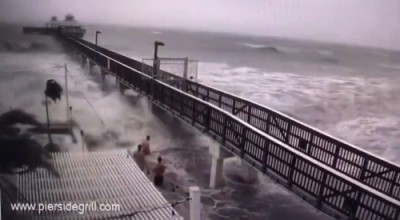דזשעמעיקע ליידט געפערליך פון האריקעין מאליסע
Heavy flooding swept through Jamaica’s central parish of Spaulding as Hurricane Melissa made a catastrophic landfall on October 28, 2025, unleashing the full force of a Category 5 storm with sustained winds of 185 mph (295 km/h). The hurricane—now officially the strongest to ever strike Jamaica since records began in 1851—left a trail of devastation that has plunged the island into a state of emergency.
Footage from Spaulding captured muddy torrents surging through homes, shops, and streets—despite the absence of nearby rivers. Residents described the floodwaters as rising within minutes, forcing families to flee to higher ground or climb onto rooftops as debris and vehicles were swept away by the current.
According to the National Oceanic and Atmospheric Administration (NOAA), Hurricane Melissa generated a storm surge exceeding 13 feet, submerging large portions of Jamaica’s northern and eastern coasts. The country’s disaster agency confirmed at least three deaths, all reportedly linked to evacuation refusals, while dozens remain missing.
The combination of extreme wind, relentless rainfall, and massive surges has crippled power grids and blocked major highways across the island. Emergency crews have struggled to access the hardest-hit communities, with officials warning that the death toll could rise as search operations expand.
President Trump pledged immediate humanitarian aid to Jamaica, coordinating U.S. relief efforts alongside local authorities and regional partners. “The people of Jamaica will not face this disaster alone,” the President said in a brief statement, reaffirming America’s commitment to Caribbean allies in crisis.
Meteorologists warn that Melissa, though expected to weaken slightly as it moves north toward Cuba and the Bahamas, remains an extremely dangerous storm capable of producing catastrophic flooding and structural collapse. As recovery efforts begin, Jamaica faces one of the most challenging rebuilding tasks in its modern history.



































